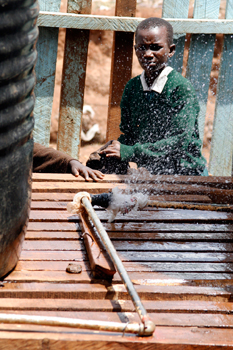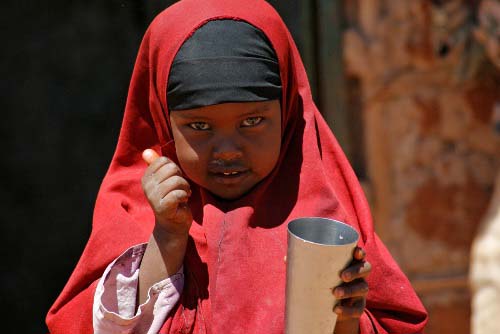
In Kibera, a massive slum of rusty tin roofs and makeshift homes spreading out from the southwest of the city, the rain is turning the twisting dirt roads and alleyways to thick red mud.
Here in one of largest slums in the world--a flashpoint for violence stemming from Kenya's parliamentary elections in December--the rain is causing open sewers to swell and uncollected garbage to rush in rivers of tattered plastic and human waste through backyards.
Potable water is one of the hardest resources to secure in Kibera and the torrents now being unleashed will offer no relief to the estimated 1 million people here who must use their meager wages--usually less than a dollar a day--to buy water for drinking and cleaning.
On a good day, 20 liters (5.5 gallons) of water in Kibera costs 5 cents, far more than what piped water costs in Nairobi's wealthy areas. But when water is rationed, or when vendors block pipes to manufacture shortages, prices can skyrocket to five times the usual cost and an impossible price for most residents here. Much of this water has been contaminated with sewage.
Credit:
Photos and Multimedia: Alex Stonehill
With Ernest Waititi, Jessica Partnow and Sarah Stuteville
Special thanks to Kenya Water for Health Organization







